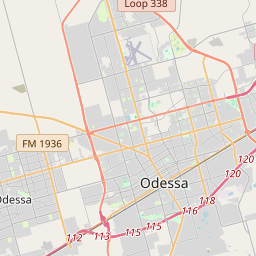Odessa Petrochemical Complex







In the 1950s, the Odessa Petrochemical Complex was the largest of its kind in the world. The first business to occupy the future complex was the Odessa Natural Gasoline Company founded in 1946 by four west Texas businessmen: W.D. Noel, E.G. Rodman, M.H. McWhirter and J.B Tubb. The aim of these oilmen was to find profitable and efficient applications for the vast quantities of natural gas wasted during the oil refinery process. Natural gas proved useful for the production of certain petrochemicals like butadine and styrene, key ingredients for synthetic rubber. The Odessa Chamber of Commerce proved eager to expand its economy, and looked to Noel and Rodman to boost prospects of the town. The chamber sanctioned the construction of a butadiene plant in 1956, followed by a Dynagen/General Tire plant in 1957 and a styrene plant in 1958. The El Paso Products Company, a joint venture between the West Texas Gathering Company and El Paso Natural Gas, built a facility and supplied the butadine and styrene plants with natural gas. This plant ultimately grew to be an anchor for the complex. Additional companies and plants joined the complex including Shell Oil, Rexene, American Cryogenics, South West Cryogenics and Beaunit Corporation. These companies produced petrochemical products used in a diverse array of residential and industrial contexts. The Odessa Petrochemical Complex fostered the growth of the American petroleum industry which, in turn, facilitated the subsequent expansion of Odessa. (2015)
As one of the most visible programs of the Texas Historical Commission (THC), historical markers commemorate diverse topics in Texas history, including: the history and architecture of houses, commercial and public buildings, religious congregations, and military sites; events that changed the course of local and state history; and individuals who have made lasting contributions to the state, community organizations, and businesses.
The Alamo, a mission in San Antonio, is perhaps the most famous historical site in Texas. It was the site of a key battle during the Texas Revolution in 1836.
The county's history took a major turn in 1881 when the Texas and Pacific Railway reached the area. This led to the establishment of the town of Odessa, which would later become the county seat. The area experienced a boom in population and economic growth, thanks to the development of the railroad and the discovery of oil in the early 20th century.
Ector County played a significant role in the oil boom of West Texas. The discovery of oil in the Permian Basin in the late 1920s transformed the region into one of the largest oil-producing areas in the United States. This led to a rapid increase in population and the development of oil-related industries. The county's economy became heavily reliant on oil, with many residents working in the oil fields or related industries.
In recent years, Ector County has continued to see growth and development. The region has diversified its economy to include industries such as healthcare, education, and manufacturing. As the county seat, Odessa has become a vibrant city with a thriving arts and cultural scene. Today, Ector County is known for its rich history, oil heritage, and its contributions to the energy industry.
Ector County Timeline
This timeline provides a condensed summary of the historical journey of Ector County, Texas.
- 1880 - Ector County is established and named after Confederate General Mathew Ector.
- 1889 - Odessa, the county seat, is founded as a water stop and trading post for the Texas and Pacific Railway.
- 1927 - The discovery of oil in the Permian Basin leads to a population boom in Ector County.
- 1935 - Odessa becomes a city and experiences rapid growth due to the oil industry.
- 1951 - The University of Texas Permian Basin is founded in Odessa.
- 1970 - Ector County's population surpasses 100,000 residents.